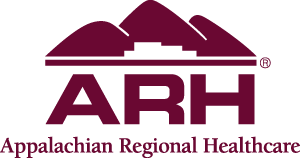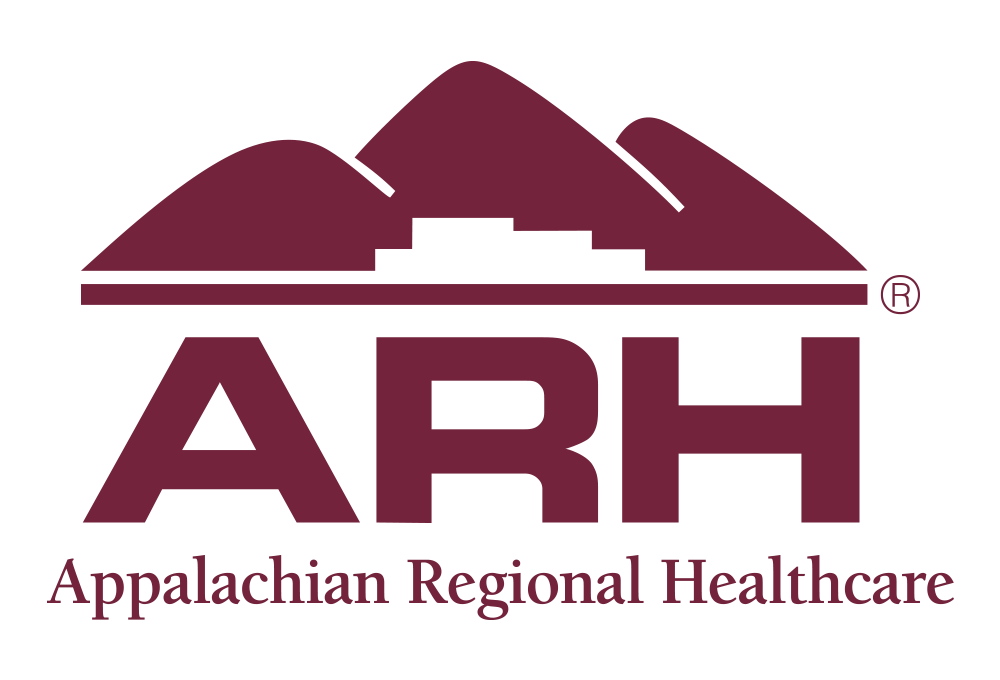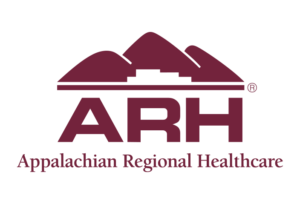
NEWS RELEASE – February 16, 2023
Tim Hatfield finds contentment serving his native eastern Kentucky
February 16, 2023 – “So, are you going to ask me the question, ‘If I was a tree, what kind of tree I’d wanna be?’” Tim Hatfield asks with a laugh.
The ARH Big Sandy Regional CEO is referencing the famous – or perhaps infamous — Katharine Hepburn interview during which legendary journalist Barbara Walters posed the same question.
Though just joking, Hatfield has clearly given thought to the hypothetical query.
And like Hepburn, he delivers the same matter-of-fact answer.
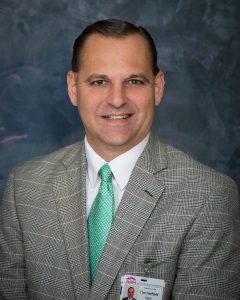 “An oak tree,” he says with a quick nod of his head. “Not only for strength, but from a burning point of view, an oak and a birch put out higher BTUs and more energy than any other type of tree.”
“An oak tree,” he says with a quick nod of his head. “Not only for strength, but from a burning point of view, an oak and a birch put out higher BTUs and more energy than any other type of tree.”
High energy is an apt description for Hatfield.
And though he doesn’t mention the strong, deep roots holding an oak tree firmly in place, he’s got those, too.
The most obvious of Hatfield’s roots date back to a famous family feud.
“Our parents and grandparents didn’t want to talk about it because it’s embarrassing,” the Hardy, Ky., native says of the bloody dispute between the Hatfields and McCoys. “But I grew up three houses down from where the McCoy homeplace was.”
Older generations didn’t like to talk about it, but as a teenager, Hatfield served as a tour guide leading people through the old McCoy cemetery.
He left his tour guide days behind after graduating from Belfry High School. But instead of following family tradition, he instead planted his own roots.
Hatfield descends from a long line of ministers and railroaders. Naturally, he says, his father thought he would fall in line, following in not only his footsteps, but in those of his brother, uncles and grandfather.
“When I walked across the stage at my high school graduation, my dad shook my hand and said, ‘I got a job for you,’” he says.
 Though not yet sure at 18 what he wanted to do with the rest of his life, he knew he wanted to become the first member of his family to attend college, rather than the latest to work on the railroad.
Though not yet sure at 18 what he wanted to do with the rest of his life, he knew he wanted to become the first member of his family to attend college, rather than the latest to work on the railroad.
“I said, ‘Dad, I want to go to community college,’” he recalls.
Father and son repeated similar conversations twice more over the next few years, as Hatfield graduated from Southern West Virginia Community College and then Pikeville College, now known as Pikeville University.
When he received his master’s degree in accounting from Morehead State University, however, the script changed.
“He said, ‘Tim, I can’t help you anymore,’” Hatfield says, explaining railroad hiring decisions were no longer made locally. “He said, ‘I sure hope you can get a job.’
“I said, ‘I sure hope I can, too.’”
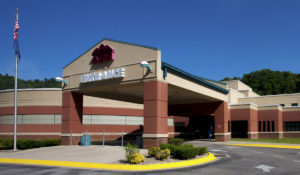 Hatfield was employed at the time, as he had begun working as a materials manager at Tug Valley ARH Regional Medical Center (known then as Williamson ARH Hospital), during his final year of grad school.
Hatfield was employed at the time, as he had begun working as a materials manager at Tug Valley ARH Regional Medical Center (known then as Williamson ARH Hospital), during his final year of grad school.
His goal, however, was to work as a CPA.
“I’ve always loved numbers,” he says. “I had these little half dollars the ladies at church gave me and I purchased this tackle box with a lock on it. My brother would borrow money and I would put a paper receipt in it and make him sign it and he’d have to pay me back with interest.”
It was during his final semester of grad school – around the same time he started work at the hospital – when Hatfield was offered an opportunity to enter CPA training with what was then known as A.T. Massey.
And though it was the third or fourth time he had applied with the coal company, when the offer finally came in, he knew it wasn’t a good fit.
He says he was enjoying the accounting and inventory work at ARH and decided perhaps that was where his future lay.
“The money they were offering was attractive, but I said, ‘There’s something in my heart,’” he recalls of the words he used when declining the offer. “I said, ‘I’ve prayed about this. I really like where I am and I like the people I’m working with. I feel good about ARH and its mission.
“’I don’t know where this is going to end up in healthcare, but I think I’ve got a lot opportunities.’”
It was about a month later, Hatfield says, when he learned from the hospital’s CEO John Grah that his assistant administrator was leaving.
“He asked if I ever thought of getting into healthcare administration,” he recalls. “I said, ‘Heck, yeah I would. That sounds like a wonderful opportunity.’”
It took a bit of time – he applied for the position, finished grad school and then had to talk his way in – but Hatfield got his shot.
“I hadn’t heard anything for a while, so I went back and talked to him (Grah),” Hatfield recalls. “He said, ‘I’ve got all kinds of interest from around the country.’
“So, we sat down at a table and looked at each applicant and I told him reasons not to hire them. Then I told him the reasons to hire me.”
Among those reasons, Hatfield says, was a deep commitment to his roots.
“I said, ‘I’m not saying I’m going to work with you for 30 years, but right now I feel like I might work with you for 30 years,’” he recalls of the conversation during which he stated his commitment to ARH and his community. “I said, ‘I feel like you’ve got retention on your side, long after you’re gone.’”
He and his wife Joni had grown up just down the road, after all.
And neither of them had any desire to stray far from home or from the families who raised them.
“We wanted to be around to help them out,” Hatfield says. “I think that’s just something you do in Appalachia and we were committed to that.”
And after interviewing with senior leadership in Lexington, he got the job.
It’s not surprising that Hatfield talked his way into his first leadership role with ARH.
He is, after all, the same man who approached a stranger and talked him into selling a home that wasn’t even on the market.
That happened a few years later, though.
Hatfield was working a dual role as assistant administrator and risk manager at Tug Valley when he was asked to wear a third hat as the interim administrator at the now-closed ARH facility in Man, W.Va.
“Man was really struggling,” he says. “We tried to do everything we could to keep those doors open but it was just a very difficult time.”
When the hospital closed a few months later, Hatfield resumed his duties at Tug Valley and, shortly after, was named CEO.
“I think we had had 9 CEOs at Tug Valley since the beginning of the hospital in the late 1950s,” he says of his 2001 promotion. “I took a lot of pride in the fact that I was from that community.”
And though he hadn’t followed his father’s career path, he had, in a way, followed his footsteps.
Before the elder Hatfield gained tenure on the railroad, he sometimes had stretches when he had to supplement the family income by working elsewhere.
“He worked at a local gas station,” but he also worked at ARH, Hatfield says of his dad.
After his son was promoted to assistant administrator, the elder Hatfield stopped in for a visit and told stories of shoveling mud from the basement during a 1957 flood.
“It was sort of cool because he had walked some of the same pathways I was walking,” he says. “He told me he had some of his best memories at ARH.”
Hatfield walked those same pathways until 2003, when he assumed the role of assistant COO at a nearby non-ARH hospital.
Over the next two years, he says he developed a skillset he didn’t know he lacked.
“The CEO had been there 30 years or longer and he had so much vision,” he says. “It was fascinating for me because he could tell me where the hospital was that day and where he wanted it to be in six months, a year and 5 years.
“I knew I was pretty good day-to-day or month-to-month, but I didn’t have that long-term vision process really wired in my head.”
In two years’ time – when the opportunity to return to ARH arose – he says that had changed.
“I enjoyed my time there, but sort of came back with the vision in my mind of what I could do to improve ARH,” he says.
Hatfield spent two years as CEO of Morgan County ARH Hospital, before returning as CEO of Tug Valley.
And in 2019, after 12 ½ years at the hospital where he got his start, he made what he calls his most difficult career decision, accepting the CEO position at Highlands ARH Regional Medical Center.
Hatfield didn’t immediately leave Belfry though, as he made the hour drive to Prestonsburg and back each day.
By the end of March 2020, with the world – and healthcare in particular – in upheaval due to the arrival of Covid-19, Hatfield was ready to put an end to the commute.
“I had to leave by 4 a.m. to get to work and I wasn’t getting back until late at night,” he explains. “I wasn’t seeing my family. Driving was getting old.”
But though the Hatfields – including daughter Haley and son Carson – were ready to move, finding a real estate agent willing to show them houses during the early days of the pandemic proved difficult.
That’s when Hatfield, just as he had done when he talked his way into hospital leadership for the first time, used his persuasion skills to find a new home.
“We wanted all along to find a house near a particular church because the pastor of that church had been the pastor of our church in Belfry 18 years ago,” he says. “So, on Easter Sunday, we’re driving around a subdivision close to the church and my wife fell in love with a house.”
It wasn’t for sale, but when Hatfield saw the homeowner outside, he stopped the car.
“My wife said, ‘you’re crazy,’” he recalls. “But I said, ‘it doesn’t hurt to ask.’”
The Hatfields toured the house the following week and, in August, moved into their new home in the neighborhood of their church and just three miles from the hospital.
Highlands was a new addition to the ARH system when Hatfield assumed the role of CEO.
“It was a big challenge for me,” he says of the transition. “But it was also exciting integrating Highlands into the ARH system, showing our employees how it’s done in the ARH world and why it’s done that way.”
Hatfield, who was named ARH Big Sandy Regional CEO in 2022, says he is pleased with the progress and the improvements made so far, but stops short of saying he’s happy.
“You never want to be happy,” he explains. “If you’re ever happy, complacency steps in and you start going backward. It’s hard to rebound from going backward.
“When you’re in healthcare, you want constant improvement.”
Hatfield says one of the things he enjoys about healthcare is the ability to measure positive results. And those results, he says, wouldn’t be as easy to recognize in a bigger market.
“You have folks you know taking care of you here,” he says. “You lose that in a large, metropolitan area.”
The perfect example of that, he says, came as a result of one of the region’s darkest times.
“To me, ARH stands for Always Ready to Help,” he says, voice cracking with emotion. “I’ve seen that so many times throughout my career and most recently with the flooding.”
Highlands, along with many other ARH hospitals, stockpiled water, dry goods, clothes and monetary donations for those in need in the weeks following the July 2022 flooding in eastern Kentucky.
“The opportunity to give back is a lost art, I think,’” Hatfield says. “People talk about being a servant leader, but not many people do it.”
Despite his family ministerial background, his church and faith didn’t always play a significant role in his life.
That changed, however, as the result of a relationship built in his early days at Tug Valley ARH.
Hatfield says a surprise conversation he had with former Tug Valley CEO Louis Roe led him into church. A few days later, a surprise visit in his hospital office from the church’s pastor – his same pastor today – led to his salvation.
“He said, ‘Tim, I know you’re busy, but I’ve got just one question for you,’” Hatfield recalls. “He said, ‘Are you a Christian?’
“Thirty minutes later, in the floor of my office, I got saved.”
Not long after, the pastor returned to the hospital – at Hatfield’s invitation – to speak to an employee he thought might also be in need of the same kind of assistance.
“Thirty minutes later, he came to my office,” an emotional Hatfield says. “He got saved in the cafeteria floor.”
Hatfield says he treasures the relationships built through his years at ARH.
Making connections and offering assistance, particularly to those in his native eastern Kentucky, are, he says, among the most important things in life.
“You really feel like you’re planted where you need to grow.”
###
Appalachian Regional Healthcare (ARH), is a not-for-profit health system operating 14 hospitals in Barbourville, Hazard, Harlan, Hyden, Martin, McDowell, Middlesboro, Paintsville, Prestonsburg, West Liberty, Whitesburg, and South Williamson in Kentucky and Beckley and Hinton in West Virginia, as well as multi-specialty physician practices, home health agencies, home medical equipment stores and retail pharmacies. ARH employs more than 6,500 people with an annual payroll and benefits of $330 million generated into our local economies. ARH also has a network of more than 600 active and courtesy medical staff members. ARH is the largest provider of care and the single largest employer in southeastern Kentucky and the third-largest private employer in southern West Virginia.
